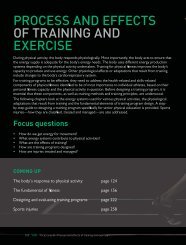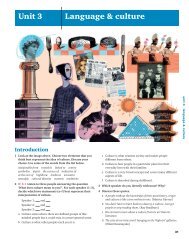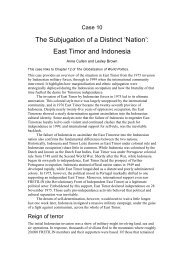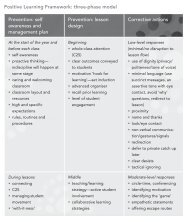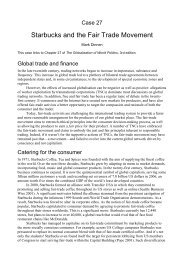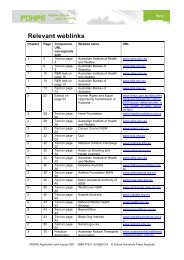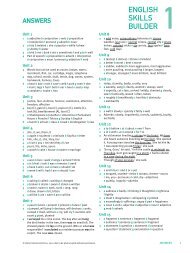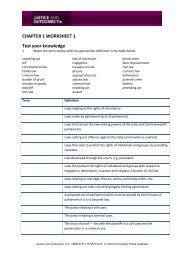Create successful ePaper yourself
Turn your PDF publications into a flip-book with our unique Google optimized e-Paper software.
PDHPE Application and Inquiry<br />
294<br />
Hard-tissue <strong>injuries</strong><br />
Types of hard-tissue <strong>injuries</strong><br />
Hard-tissue <strong>injuries</strong> include fractures and dislocations.<br />
Fractures<br />
A fracture is a break in a bone. This can result from<br />
a direct force, an indirect force or repetitive smaller<br />
impacts (as occurs in a stress fracture).<br />
If the skin over a fractured bone is intact, the fracture<br />
is described as ‘simple’ or ‘closed’. If the skin over a<br />
fracture is broken, the fracture is described as ‘open’<br />
or ‘compound’. The skin might be broken either by the<br />
force of the injury that caused the fracture or by a piece<br />
of broken bone protruding through the skin. A fracture<br />
is described as ‘complicated’ if nearby tissues and/or<br />
organs are damaged.<br />
In some cases, a simple fracture can be difficult <strong>to</strong><br />
detect. The signs and symp<strong>to</strong>ms of a fracture include:<br />
• pain at the site of the injury<br />
• inability <strong>to</strong> move the injured part<br />
• unnatural movement of the injured part<br />
• deformity of the injured part<br />
• swelling and discolouration<br />
• grating of bones.<br />
Dislocations<br />
Dislocations are <strong>injuries</strong> <strong>to</strong> joints where one bone<br />
is displaced from another. A dislocation is often<br />
accompanied by considerable damage <strong>to</strong> the surrounding<br />
connective tissue. Dislocations occur as a result of the<br />
joint being pushed past its normal range of movement.<br />
Common sites of the body where dislocations occur are<br />
the finger, shoulder and patella.<br />
Signs and symp<strong>to</strong>ms of dislocation include:<br />
• loss of movement at the joint<br />
• obvious deformity<br />
• swelling and tenderness<br />
• pain at the injured site.<br />
Table 16.3 Types of fractures<br />
Type of fracture Definition Associated fac<strong>to</strong>rs<br />
Closed The bone is fractured but there is no cut or wound<br />
at the fracture site.<br />
Open A jagged end of the fractured bone protrudes<br />
through the skin or there is a cut near the<br />
fracture site.<br />
Complicated The fractured bone damages the local tissues;<br />
i.e. the organ(s) that it protects (e.g. a lung<br />
punctured by a fractured rib).<br />
(a) (b) (c)<br />
Figure 16.7 Types of fractures: closed (a), open (b) and<br />
complicated (c)<br />
Figure 16.8 Splinting a leg fracture<br />
Bleeding remains concealed beneath the skin.<br />
Visible external bleeding occurs. Infection may<br />
enter the body and the bone through the cut.<br />
Infection will significantly delay healing and<br />
should be prevented.<br />
Seek medical assistance quickly as the damage<br />
<strong>to</strong> other structures may cause internal bleeding.



